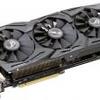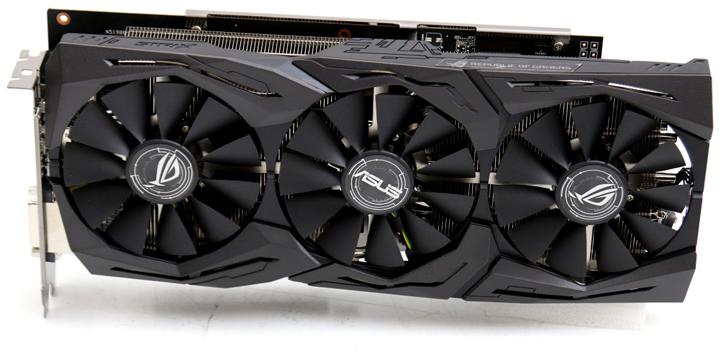Introduction
ASUS ROG Radeon RX 580 STRIX 8GB
ROG-STRIX-RX580-T8G-GAMING - TOP Overclocked edition
We review the ASUS Radeon RX 580 STRIX with 8GB graphics memory. This is the TOP OC edition that comes with maximum clocks. This three fan cooled mainstream graphics card series will allow you to play your games in both the Full HD 1080P range as well as gaming in WQHD (2560x1440) range. As always ASUS ROG has a few strix tricks up their sleeves. And all that at a rather reasonable price of roughly 269 USD. This review is all about Polaris 20, a code-name indicative of the mainstream Radeon RX 580 series, The new GPU is basically the same as the Radeon RX 480, it however is fabbed with a 3rd generation 14nm process which is a little more refined. That results into a GPU that can be clocked and boosted a notch faster. As such yes, AMD is refreshing their lineup. Actually four new models are released:
- AMD Radeon RX 580 4GB and 8GB
- AMD Radeon RX 570 4GB and 8GB
- AMD Radeon RX 560 2GB/4GB
- AMD Radeon RX 550 2GB
We'll talk a little more on all differences later on in the article, but the primary focus will be Radeon RX 570 and 580. Both the The Radeon RX 570 and 580 graphics card will be made available in 4 and 8GB versions, you will also see both reference and tweaked SKUs from the board partners. The GPU used in the 580 is based on Polaris 20 (XTX), an Ellismere (codename) GPU based on 4th generation GCN architecture. For the RX 570 that would be a Polaris 21, which is based on the same GPU and is similar to the Polaris 10 based products last year. The GPUS are fabbed based on a 3rd generation 14nm FinFET+ process based. The Radeon RX 580 will push the product to just over 6 TFLOPS of peak performance, 5 TFLOPS for the Radeon RX 570. The fabrication process is more refined and this allows AMD to create better silicon with less leakage. As a result, the clock frequencies can go up.
Radeon RX 580
The Radeon RX 570 can now boost towards 1244 MHz whereas the RX 580 clocks in towards 1340 MHz on that boost frequency. More MHz means more power, coming from 150W the RX 580 now hovers at a 185W TDP with its 36 CUs (compute units aka shader clusters) x 64 shader processors per CU = 2304 shader processors). The cards will be available in both 4GB and 8GB versions and has 256-bit GDDR5 memory which offers an effective 8 Gbps / GHz.
Radeon RX 570
The Radeon RX 570 is able to boost towards 1244 MHz with a 1168 MHz base clock frequency. This SKU now is set at a 150W TDP with its 32 CUs (compute units aka shader clusters) x 64 shader processors per CU = 2048 shader processors). The cards will be available in predominantly 4GB but also 8GB versions and has 256-bit GDDR5 memory which offers an effective 7 Gbps / GHz.
The reference cards will use just one 6-pin power PEG (PCI Express Graphics) header to give the the card its power. The reference boards have a 6-phase VRM power supply design and display output wise includes DisplayPort 1.4 connectors and one HDMI 2.0b. AIB partners may release SKUs with a DVI connector as well, the reference PCB shows SMT traces for a DVI connector. Overall the specs show a very potent card to play the latest games with whilst offering a good memory size versus price in the 1920x1080 and even 2560x1440 monitor resolutions.
In this review we peek at the Radeon RX 580 STRIX from ASUS, the card is fitted with 8GB of graphics memory and has been factory tweaked for you at 1411 (max boost) MHz with the memory at an effective data-rate of 8.0 Gbps. You can spot this model under product code ROG-STRIX-RX580-T8G-GAMING. Being an STRIX model it has been fitted with a proper back-plate, LED functionality and obviously the an impressive and massive three-fan / three slot cooler. And for something mainstream certainly looks high-end.
Let's start up this review, but not before you've had a peek ...
Asus Radeon RX 580 strix edition with 8GB GDDR5 memory


